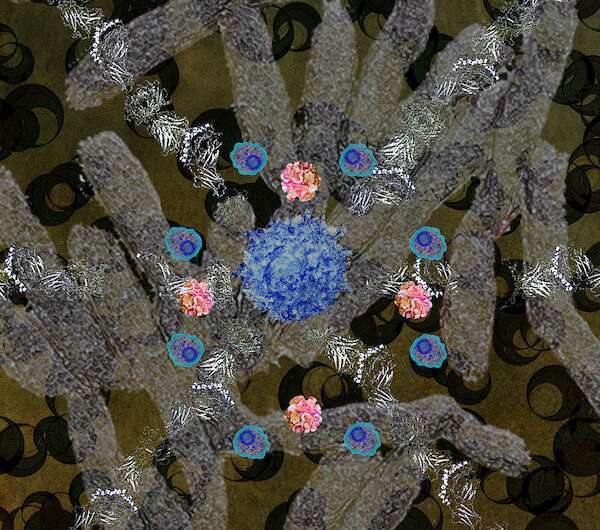This article has been reviewed according to Science X'seditorial processandpolicies.Editorshave highlighted the following attributes while ensuring the content's credibility:
fact-checked
peer-reviewed publication
trusted source
proofread
Team discovers near-universal T cell immunity towards a broad range of bacteria

Typically T cells of the immune system respond to a specific feature (antigen) of a microbe, thereby generating protective immunity. As reported in the journalImmunity, an international team of scientists have discovered an exception to this rule. Namely, a group of divergent bacterial pathogens, including pneumococci, all share a small highly conserved protein sequence, which is both presented and recognized by human T cells in a conserved population-wide manner.
研究着手了解免疫机制that protect against pneumococcus, a bacterial pathobiont that can reside harmlessly in the upper respiratory mucosae but can also cause infectious disease, especially in infants and older adults, which can range from middle ear and sinus infections to pneumococcal pneumonia and invasive bloodstream infections.
Most currently used pneumococcal polysaccharide-based conjugate vaccines (PCVs) are effective against 10–13 serotypes, but growing serotype replacement becomes a problem.
WHO estimates that 1.6 million people die of pneumococcal disease every year, including 0.7–1 million children aged under 5, most of whom live in developing countries.
The Monash Biomedicine Discovery Institute-co-led study, in collaboration with the National Institute for Public Health and the Environment (RIVM) and Utrecht University in the Netherlands and Cardiff University in the UK, identified a crucial fragment of the pneumococcal toxin pneumolysin that was commonly presented by a particular class of human antigen presenting molecules and recognized by T cells from most people who naturally develop specific immunity to pneumococcal proteins.
The study further found that the uniformly presented and broadly recognized bacterial protein fragment was not unique for the pneumococcal pneumolysin but was shared by a large family of bacterial so-called cholesterol dependent cytolysins (CDCs). These are produced by divergent bacterial pathogens mostly affecting humans and cause a range of respiratory, gastro-intestinal, or vaginal infectious diseases.
First author Dr. Lisa Ciacchi said, "The use of the National synchrotron was key to provide molecular insight into how the T cell receptors see these conserved antigens when presented by common Human Leukocyte Antigen (HLA) molecules."
Shared first author Dr. Martijn van de Garde said, "We have not yet identified the exact function of the near-ubiquitous T cell populations to this commonly presented conserved protein fragment during ongoing colonizations or infections with CDC producing bacteria. Whether the T cells have a cross-protective mode of action or have an anti-inflammatory tolerizing function, remains to be investigated."
Shared first author Dr. Kristin Ladell said, "The identification of T cells that recognize a ubiquitous bacterial motif using T cell receptors that are shared between individuals with prevalent HLAs is very exciting. Reagents generated for this study can now be used to study patient groups to examine how prevalent these shared TCRs are and how they are related to immune protection."
Continuing investigations could instruct the development of interventions for people to more efficiently resist or clear CDC-related bacterial diseases.
More information:杰米•Rossjohn CD4 + T细胞识别of a conserved cholesterol-dependent cytolysin epitope generates broad antibacterial immunity,Immunity(2023).DOI: 10.1016/j.immuni.2023.03.020.www.cell.comimmunity/fulltext/ … 1074-7613(23)00140-1





















